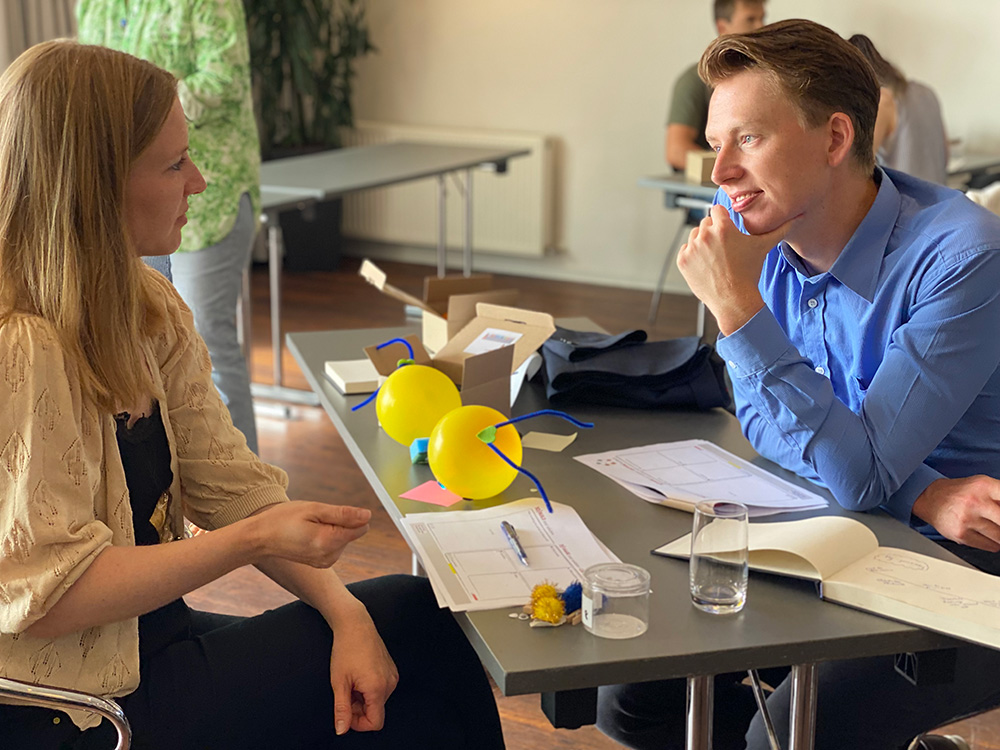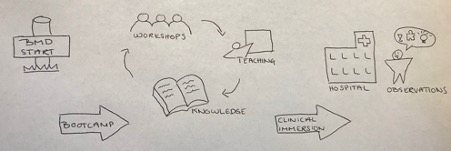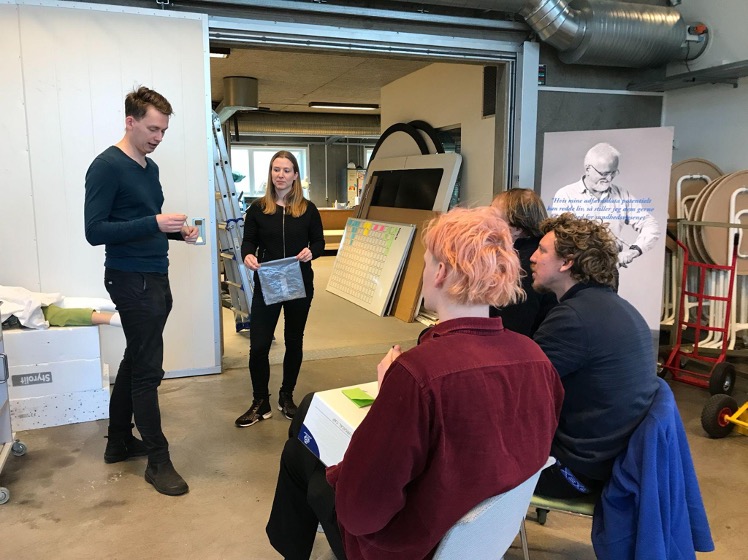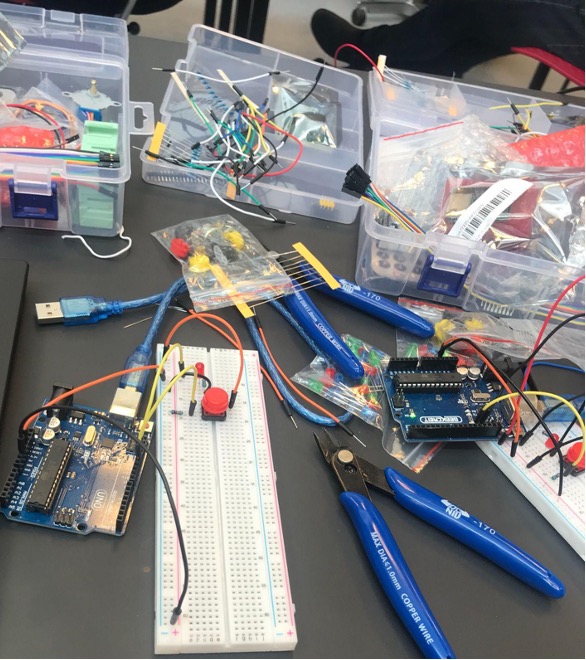
Upgrading our professional backgrounds…
Align and learn together
Our team consisted of Søren who is a medical doctor with experience in different specialities and Tine who is a researcher with a background in biomedical engineering. As the programme is intense and you have to work closely in the teams, we put a lot of effort in aligning and understanding each other’s expectations from the beginning. It has been interesting to work closely with one person where you need to compromise and find common interests for the project to be equally motivated. As a team you learn both individually and together and are pushed to explore barriers and corners outside your comfort zones.
Speaking a common language
Even though we have two different backgrounds in our team, we quickly realized that our “language” was quite similar due to Tine’s interest and working experience in the clinical environment and Søren’s interest in the technical elements of hospital equipment. As we were not so different in our knowledge and working habits, the teamwork seemed to develop relatively effortlessly. In a team of two persons the interdisciplinarity is limited and thus, we took the opportunity to seek interdisciplinary inputs to a larger extent among our co-fellows and through the massive BMD-network.
Identifying needs
We have been in the clinic to do observations and to find needs. This was an individual process where all fellows brought their observations into the team. This included both different observations and overlapping observations, which led to clarifying discussions in the team. The team process of narrowing down all the identified needs was dependent on many elements including interests, competences and ambition levels.

Creative, crazy and cool ideas
It has been an eye-opener to go through the creative and iterative process of ideation-, prototesting- and co-creation sessions realizing how far you can develop and build on ideas with relatively fast and cheap methods. It has been a fun process allowing for crazy and unrealistic ideas to be used as inspiration to come up with cool ideas.
In our team we spend a lot of time understanding the problems we worked with. We researched the literature to get a deeper understanding about the physiology and the root causes of the problems and procedures related to the unmet needs. It was valuable to get a lot of questions and sparring with our co-fellows.

Iterating for a suited solution

The process of finding a solution has both been fun and frustrating and you learn to make decisions based on limited information within certain time frames. We were introduced to different types of prototyping to be able to build more tangible low cost mock-ups of our solutions using e.g. 3D printing, electronics and digital prototypes.
Before narrowing down to focus on a few solutions we went back to the clinic to talk to stakeholders to get more knowledge about their requirements for a solution. In that process it was amazing to experience how willing people are to share their knowledge and the eagerness to help us further in the process. Also, when you meet people who are more critical to your ideas, it provides a lot of valuable insight when you remember to ask why they think your solution wouldn’t work. You also have to be prepared to get a lot of different answers and inputs to your questions. All contributing to enhance your knowledge about the problem and the solution.
We work with a high risk/high reward project and it is always interesting to talk to different people even with the same professional background as they identify the risks associated with the project differently. The unmet need we try to address has been difficult to attack until we tried flipping it and asked what THIS solution could do compared to state of the art.
There have been ups and downs during the project. The learning curve has been steep and it has been challenging to make the right strategies. Right now we work on de-risking specific areas of the project and we attempt to acquire funding to proceed. We feel obligated to try to find out if our solution can be a candidate solution to this important unsolved problem.